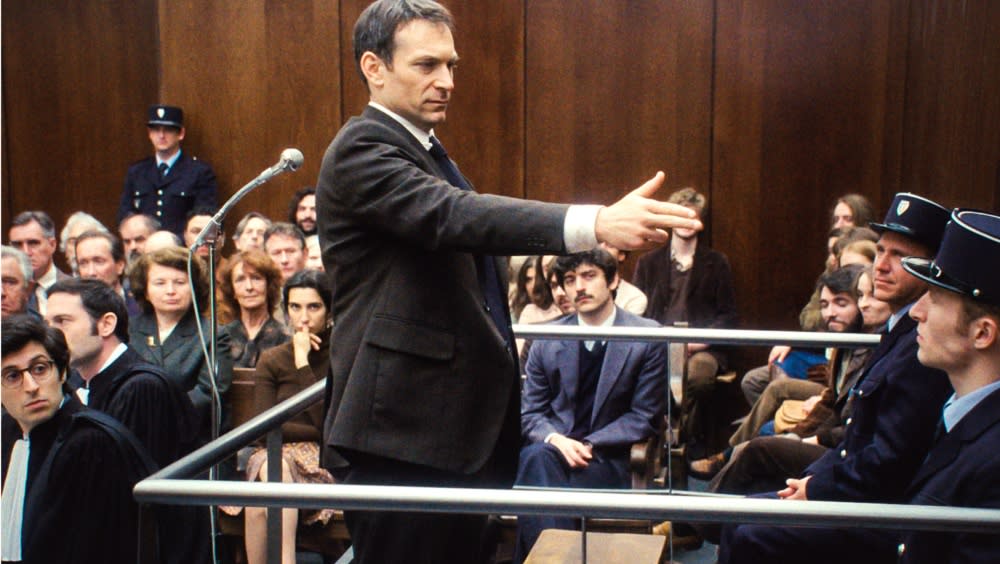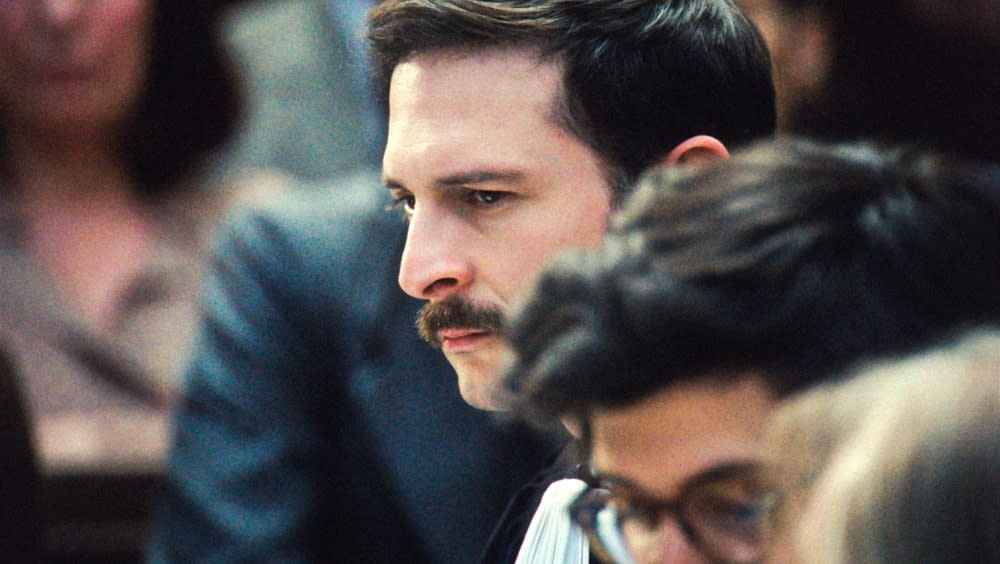With Directors’ Fortnight Opener ‘The Goldman Case,’ Director Cedric Kahn Puts Language On Trial

Opening this year’s Directors’ Fortnight, “The Goldman Case” soars on rhetoric and singes with political debate, condensing a decade worth of civic upheaval into the narrow contours of a courtroom thriller.
At the center of this docudrama is Pierre Goldman (Arieh Worthalter), a left-wing radical appealing a murder charge – alongside a number of other offenses he actually does cop to – who became a galvanizing figure in France of the 1970s.
More from Variety
Working with co-writer Nathalie Hertzberg, director Cedric Kahn lifted from the accused’s two trials in 1974 and 1975, from subsequent interviews with friends and associates, and from the pages of the landmark book, “Dim Memories of a Polish Jew Born in France,” that turned the imprisoned Goldman into a left-wing cause célèbre. Growing up amid fellow travelers, Kahn recognized the 1975 tome from his parents’ night table, though he only became familiar with its contents later in life.
“I was struck by the quality of Goldman’s language and thought,” Kahn says. “Though I was approached to do a more conventional biopic, I didn’t find Goldman’s life all that interesting. His was a life of failures and renunciations; Goldman’s great work, for me, was his writing – and the place for that was the trial itself.”
“We call cinema the language of images,” Kahn continues. “And so with this film, the challenge was to make cinema out of language itself, to put the camera really at the service of the text. In the end, that’s a lot simpler in theatre than in film.”

In order to bridge that gap, to make viewers active witnesses to a boisterous and frenzied trial, the filmmaker devised an unconventional production technique, filling the set with the full cast of leads and extras, and keeping them all together, day in and out, over the course of a three-week shoot.
“This was a collective experience,” Kahn explains. “Each and every person at the back of the room followed the shoot each and every day, like me. [As a director] I could judge the quality of each take just by feeling the reaction of the room. That alone let me know whether the actors were convincing.”
When sifting through a mass of material from the editing suite, Kahn would focus on cadence and rhythm, allowing the murmurs of the crowd or the violent swings of inflection to dictate the film’s shape. “I often edited with my eyes closed,” says Kahn. “I would say, let’s change the shot on this exact sentence. Let’s tie this line to that specific face.”
As written by Kahn and played by Worthalter, Goldman is the ringleader of his own murder trial, playing competing courtroom factions off one another, often to the chagrin of his own defense attorneys. “He is like a showman,” says Kahn. “Goldman stages his own accusation, and primes the public, putting on a show while questions of life and death are at stake.”
Cleaving Goldman from his beleaguered attorney Georges Kiejman (Arthur Harrari) are not only questions of courtroom strategy but wider concerns about Jewish identity, as the two sons of Polish immigrants take opposite tracks when it comes to assimilation into a France closer to the Occupation than to today.
“They were really children of the war, of the Shoah,” says Kahn. “I was very interested in the antagonism between Kiejman and Goldman because they represent two very distinct paths out of this history. I can think of examples, even in my own family, of people crushed by that weight, whereas others have been very resilient, transforming that history into social power and ambition. I think that accounts for Goldman’s aggressiveness and jealousy toward Kiejman.”
“In any case, I liked the idea of approaching [these questions] through a very transgressive character who does not live his Judaism in a classic way,” Kahn adds.

Best of Variety
Tony Predictions: Best Musical -- Four Stand Poised to Give ‘Kimberly Akimbo’ Some Competition
This 'Fast and Furious' Arcade Cabinet Allows You to Step Behind the Wheel as Dom Toretto
Sign up for Variety’s Newsletter. For the latest news, follow us on Facebook, Twitter, and Instagram.
